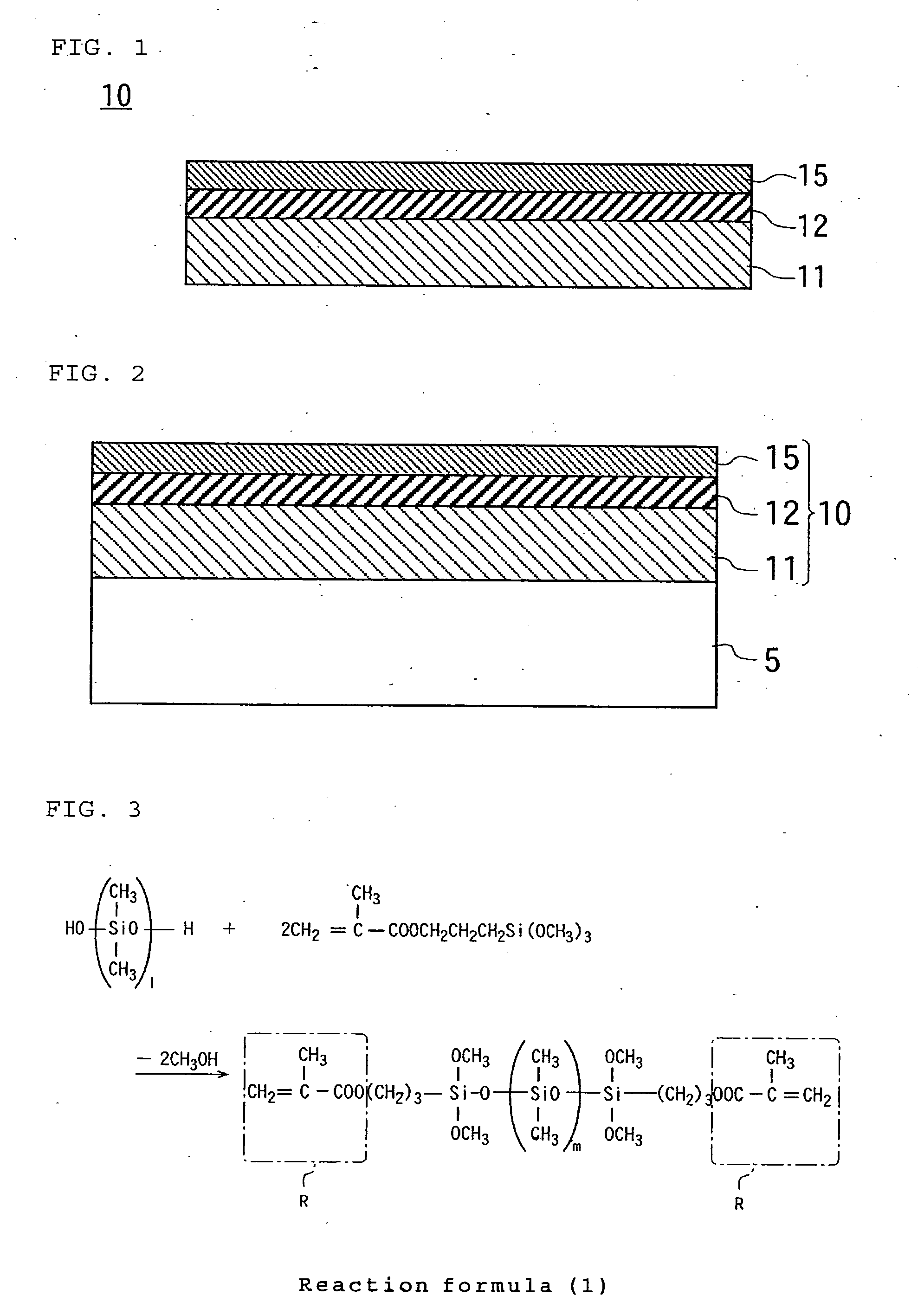Antireflection Film
a technology of anti-reflection film and anti-reflection coating, which is applied in the direction of anti-reflection coating, identification means, instruments, etc., can solve the problems of high manufacturing cost, and achieve the effect of preventing peeling, low refractive index, and resisting scratches
- Summary
- Abstract
- Description
- Claims
- Application Information
AI Technical Summary
Benefits of technology
Problems solved by technology
Method used
Image
Examples
example 1
[0090]Dipentaerythritol hexaacrylate, isocyanuric acid EO modified diacrylate, dimethylol tricyclodecane diacrylate, antimony pentoxide, and an initiator (1-hydroxy-cyclohexyl-phenyl-ketone) were dissolved in isopropyl alcohol used as a solvent such that the concentration of solids was 40 percent by weight, whereby a coating solution for the high-refractive index layer was prepared.
[0091]It should be noted that the solids are materials in the coating solution other than the solvent. In this case, the solids include antimony pentoxide, the initiator and the photopolymerizable prepolymers such as dipentaerythritol hexaacrylate.
[0092]The prepared coating solution for the high-refractive index layer was applied to the surface of a triacetyl cellulose film (thickness: 80 μm) used as the transparent substrate 11 to a dry thickness of 2 μm by a gravure method. The applied coating solution was dried in an oven at 80° C. for 1.5 minutes and cured by irradiation for 3 seconds using a 160 W hi...
example 2
[0098]An antireflection film of Example 2 was produced under the same conditions as in Example 1 except that the amount of the hollow silica particles in the low-refractive index coating agent was changed from 40 percent by weight to 50 percent by weight and that the amount of the matrix material was changed from 50.5 percent by weight to 40.5 percent by weight.
example 3
[0099]An antireflection film of Example 3 was produced under the same conditions as in Example 1 except that the amount of the hollow silica particles in the low-refractive index coating agent was changed from 40 percent by weight to 60 percent by weight and that the amount of the matrix material was changed from 50.5 percent by weight to 30.5 percent by weight.
PUM
| Property | Measurement | Unit |
|---|---|---|
| Percent by mass | aaaaa | aaaaa |
| Percent by mass | aaaaa | aaaaa |
| Thickness | aaaaa | aaaaa |
Abstract
Description
Claims
Application Information
 Login to View More
Login to View More - R&D
- Intellectual Property
- Life Sciences
- Materials
- Tech Scout
- Unparalleled Data Quality
- Higher Quality Content
- 60% Fewer Hallucinations
Browse by: Latest US Patents, China's latest patents, Technical Efficacy Thesaurus, Application Domain, Technology Topic, Popular Technical Reports.
© 2025 PatSnap. All rights reserved.Legal|Privacy policy|Modern Slavery Act Transparency Statement|Sitemap|About US| Contact US: help@patsnap.com



